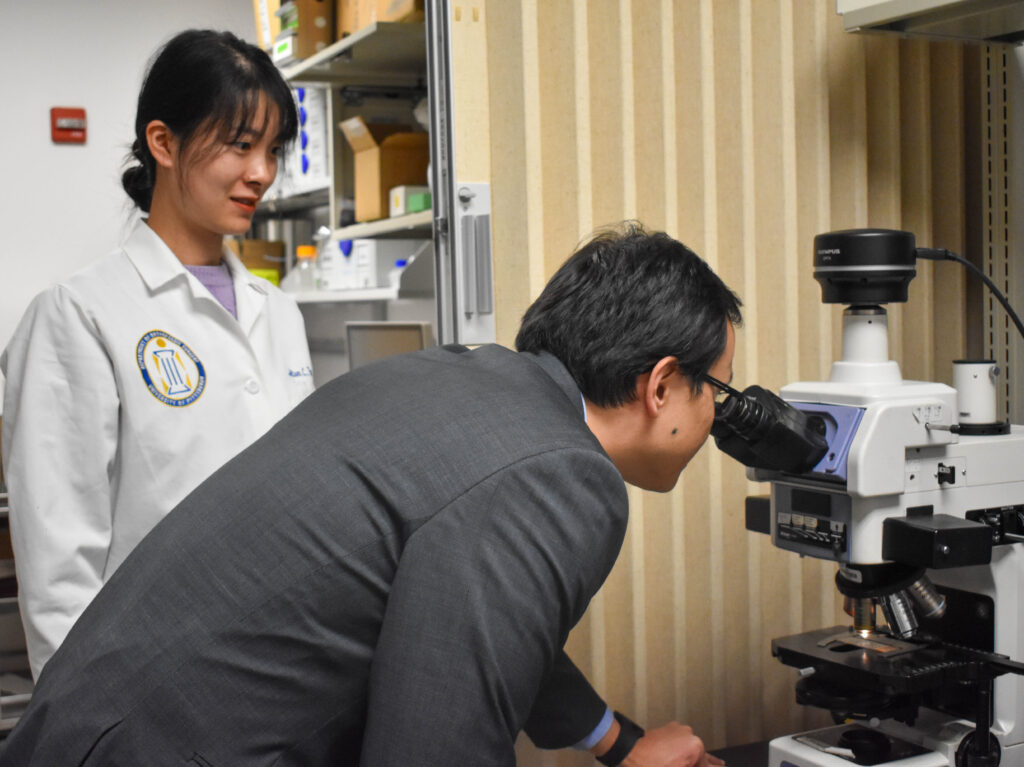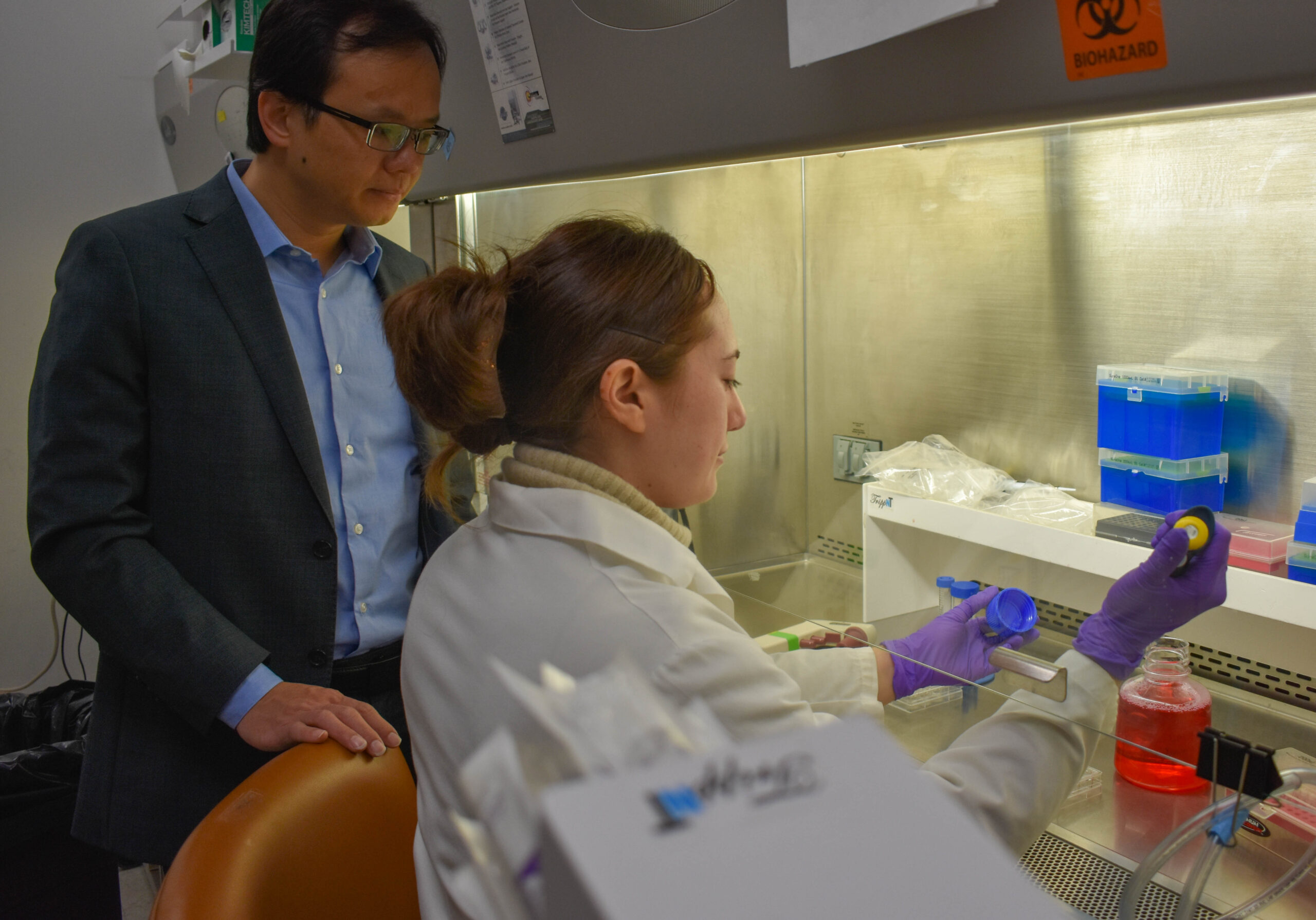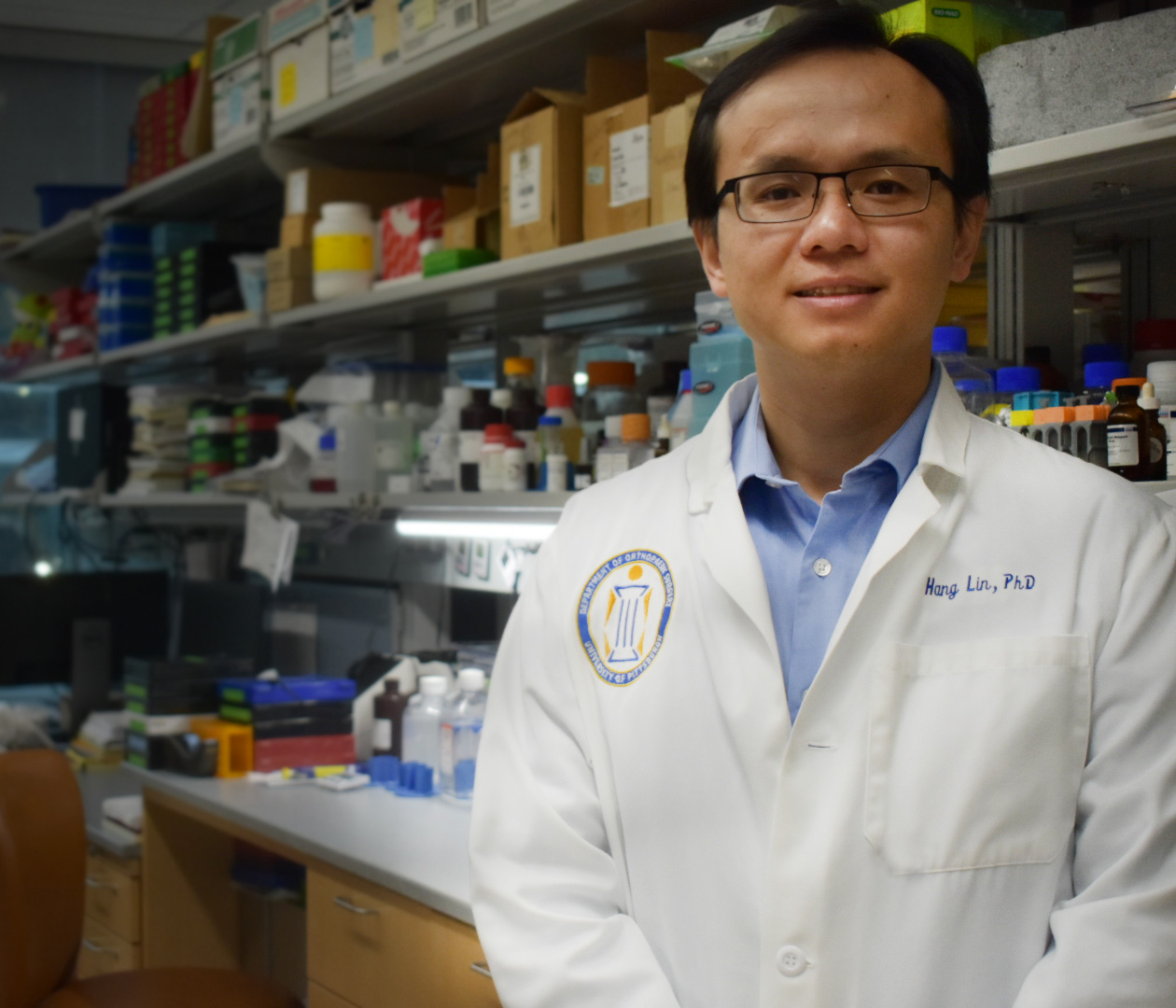Can you share a bit about your early life and what sparked your interest in research, medicine and orthopaedics/bioengineering?
When I was a Ph.D. student looking for a lab to do my thesis, I was fascinated by the tissue engineering-related work in Dr. Jianwu Dai’s lab. He was the first to introduce the idea of regenerative medicine and biomaterials to me. In particular, he showed me the potential of using stem cells to repair damaged tissues. During my PhD study with him, I developed functional collagen-based scaffolds to regenerate different types of tissues, such as bone, skin, and spinal cord.
I then joined Dr. Rocky Tuan’s lab as a postdoc associate. He was really the one who inspired and introduced me to orthopaedic research. During the time mentored by Dr. Tuan, I worked with other lab members to develop bioprinting technology and create osteochondral tissue chip, which laid the groundwork for the independent projects in my lab.
What were some pivotal moments or influences during your education that shaped your research interests?
I was fortunate enough to be supported by great mentors and collaborators who educated me a lot on different kinds of topics.
Aging is most significant risk factor for osteoarthritis. When I started my own lab, I was very interested in understanding this association. Through the recommendation from Dr. Nam Vo and a strong supporting letter from Dr. Freddie Fu, I was lucky to be selected as a Butler-Williams Scholar funded by the NIA.
I was able to talk and meet with Dr. Ana Maria Cuervo from Albert Einstein College of Medicine after she gave an inspiring talk to demonstrate the role of selective autophagy in aging. That talk led to a collaboration with her team to study how selective autophagy mediates aging-associated osteoarthritis. Dr. Richard Loeser from the University of North Carolina at Chapel Hill also helped me a lot on this topic.

What were your initial career goals when you started your journey in research, and how have they evolved over time?
When I started my Ph.D. study, I already committed to the academic pathway. I think it fit me the best.
The transition from a trainee to an independent researcher was challenging for me. I was a postdoc and then a research faculty member for a long time (7 years), which caused a slower advancement in career development when compared to my peers.
However, the extended training on grant writing, networking, and mentoring benefitted me greatly. At the initial stage of my own lab, I appreciated the unreserved support from Drs. Freddie Fu, Rocky Tuan, William Donaldson, MaCalus Hogan, Joon Lee, and administrators.
Are there specific achievements or milestones you aspire to reach in your career?
My long-term research goal is to develop translationally relevant therapies or diagnostics that improve the life quality of people who suffer from osteoarthritis and other joint disorders. I aim to nurture trainees with a rewarding and enjoyable lab environment and help them become excellent next-generation scientists.

What is your current role at the BMRC?
At the BMRC, I will serve as a core faculty member, contributing to the study of cartilage tissue engineering and osteoarthritis. I will also work with the leadership on selecting BMRC fellows and organizing the BMRC research retreat. I treasure the opportunities created by the BMRC to advance orthopaedic research at Pitt and to foster a supportive environment for new trainees entering the field.
What projects are you currently working on, and what excites you most about them?
Broadly, my research investigates the mechanism of osteoarthritis (OA) and develops treatments to reverse the associated pathological changes, particularly cartilage degradation.
We currently have three active projects pursuing these research interests: investigating the association between aging and OA, establishing an in-vitro microphysiological model (or organ-on-a-chip, OoC) for OA pathogenesis study and drug development and testing stem cell-based therapy for the repair of cartilage injury. Particularly, we are excited about the potential of using OoC to reduce animal use, enhance our prediction capacity of drug toxicity and efficacy, and reduce drug development costs.

Research can be demanding. How do you maintain a balance between your professional and personal life?
I have a 9-year-old daughter who is still considers me her best friend. We enjoy spending time together. I am able to quickly get back into things that may have been interrupted. Therefore, it’s not a huge deal when my daughter comes to me and wants to play when I am writing for work. She likes to come to my office with me, as well. She does her homework, plays, and watches videos on her iPad while I am working.
My daughter is also my exercise buddy and we spend quality time together outdoors. When she was six years old, we hiked to more than 30 overlooks/summits. I often joke that she may hold the record for youngest kid in Western PA who has visited the most overlooks!
Are there any recent developments or breakthroughs in your field that particularly fascinate you?
In the past, Dr. Cuervo and I have worked together on understanding the roles of selective autophagy in aging and osteoarthritis. We identified a biosafe compound that can slow down chondrocyte aging and the onset of osteoarthritis. We are very much looking forward to testing it.
Organ-on-a-chip models (OoC) have demonstrated their potential as a novel tool for drug development. We are using omic-based methods to define the current models and including patient cells to develop personalized OoC for precision medicine.


